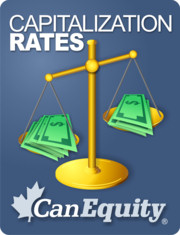What is a Cap Rate?
The capitalization or cap rate is a valuation used to give commercial buyers a more inclusive estimate of a commercial property’s value as oppose to, say, a gross rent valuation. The cap rate incorporates a property’s selling price, gross rents, non rental income, vacancies and operating expenses.
A cap rate ratio is deduced by dividing the annual net operating income of a commercial property venture by the commercial property’s sale price or current market value. The annual net operating income equates gross lease income after fixed and variable costs have been subtracted.
Example: A commercial warehouse is purchased for $2,000,000. The gross lease income generated by its tenants’ rents or other income in one year equates to $300,000, less maintenance and other costs amounting to $200,000. The remaining $100,000/$2,000,000 = 0.05 or a cap rate of 5 per cent.
Why are Cap Rates Used?
Cap rates help deduce the length of time in which a commercial property will pay for itself, or its propensity to be profitable to the buyer/investor. In the example listed above, the property is forecasted to produce 5 per cent of its value per annum, thus it will generate its purchase value in 20 years (100/5 = 20). A commercial investor or prospective commercial property buyer is typically looking for a low price and high cap rate.
Market Cap Rates
A commercial buyer can also get an idea of the overall profitability they might expect from a prospective property be examining the market cap rate. This calculation is determined by evaluating the finances of other similar properties that have recently sold in a similar, particular commercial market (ex. Other multi-units or condominium complexes in a similar location).
Inquire with a reputable commercial property appraiser, certified in the area you are looking to buy in, and check to see how and when the market cap rate for the area was tabulated. The more recent and specific the cap rate evaluation data used, the more accurate the rate should be. This evaluation should include the recent behaviors of both buyers and sellers in the area. If a string of similar properties have been sold at under-value prices with seemingly high cap rates, one must investigate extenuating factors.
Drawbacks to Cap Rates
Even in the case that a commercial property was purchased 15 years ago for $100,000 and today is worth $3-million, the cap rate is still deduced using today’s market value. Despite the fact that the property has grown exponentially in value, and may continue to do so, the cap rate cannot take appreciation into consideration because the appreciated value is tied into the property, not at the disposal of the owner(s). Thus in order for a cap rate to rise in congruence with property appreciation, so too must the net operating income the venture generates.
The cap rate has no room to consider inflation or other risk variables, such as a shrinking tenant base, rising crime levels in the area, surrounding business closures, rising property taxes or utilities, urgent repairs that need to be made, etc.
Cap rates are also limited in that they take only one year’s net operating income into equation. If this was a peak or record slow period, the rate will not accurately reflect the true potential of the property.
Cap rates have a better chance of being higher in an undesirable area, which doesn’t necessarily reflect the commercial opportunity. An area high in crime, with low property values and thus low rents and property taxes, may turn out a higher cap rate than the same type of building located in a better area of a city, and though it may yield a better profit it also presents a greater risk to the investor, especially where opportunities for resale in the future are concerned.

